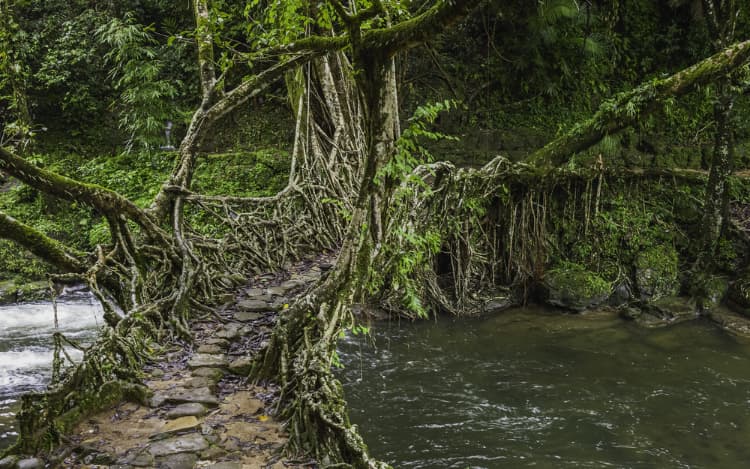Living Root Bridges of India – A Spectacular Fusion of Nature and Human Skill
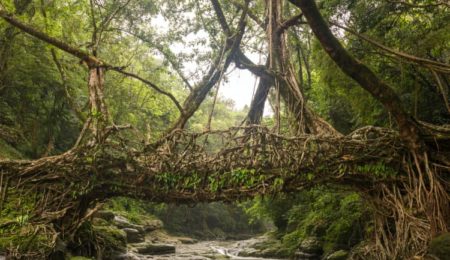
Reality may or may not be stranger than fiction, but sometimes it can be a lot more imaginative than the script of a sci-fi plot. There is a tribe in India that’s perfected the art of making living bridges out of ficus tree roots. At a time when towering steel structures are taking over the cityscapes, when even cemented bridges have been known to break down or give way, to have bridges that are natural and sturdy is incredible. The ever-growing, living root bridges are a marvel of Meghalaya, the pride of the Khasi tribe and a sight to behold. Meticulously growing over a period of time, they are not just sturdy but also a reliable method of crossing over ravines in the northeastern state.
Table of Contents
The mechanics of a living bridge
The dense, tropical rainforests of Meghalaya house an infinite variety of wild riches. The Ficus tree, or Ficus elastica, is one of the many trees found in the region. Locally known as jing kieng jri, the living root bridges are made of thick, tangled roots of the trees. A ficus tree is planted on both sides of a stream or ravine, and after that, the process of creating a fully functional bridge takes between 10 to 15 years.
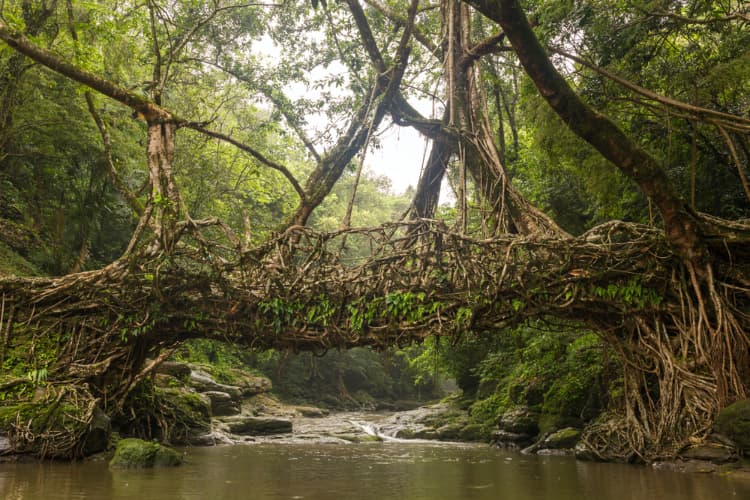
Numerous ethnobiologists have dedicated their efforts to studying and explaining the intricate process behind these bridges. After planting ficus trees on both sides of a stream or ravine, the challenge lies in directing the tree’s roots in the desired direction, even across deep gorges or rivers.
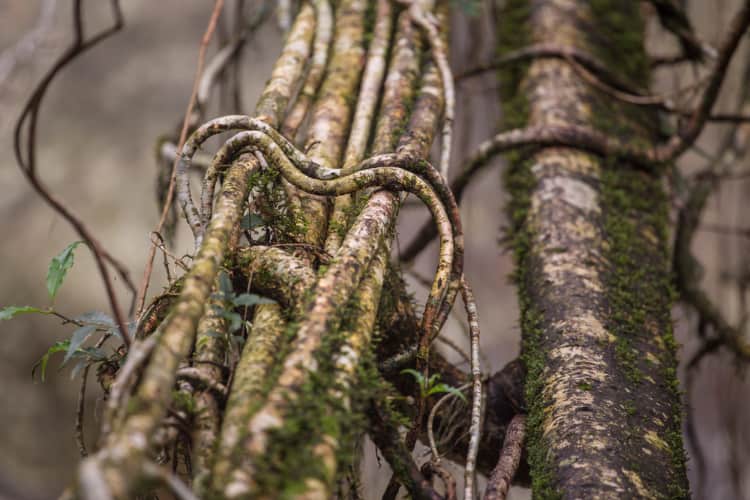
The Khasis ingeniously utilize available resources by employing sliced betel nut trunks as root-guidance systems. These trunks prevent root spreading, ensuring the roots grow straight towards their intended destination. Once the roots reach the opposite side, they establish themselves in the soil, gradually forming a resilient and living bridge over time.
How safe is it to cross a living ficus bridge?
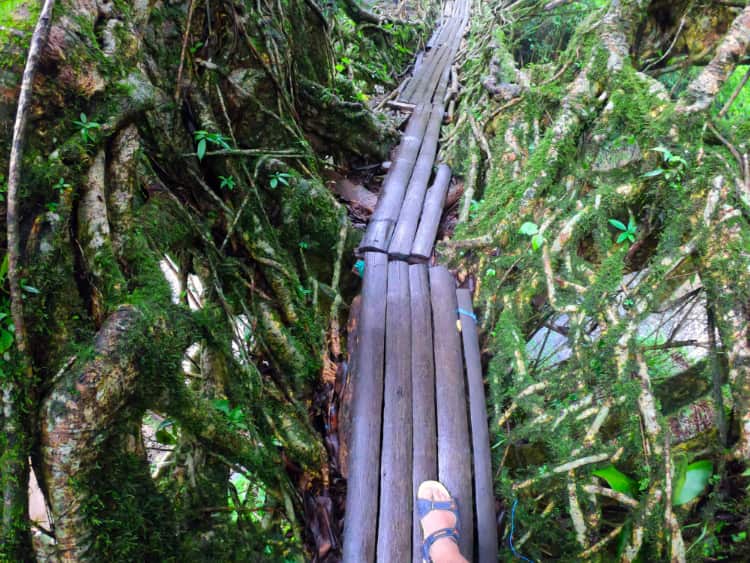
According to statistics shared by Meghalaya Tourism, there are approximately 100 or so known living root bridges across different villages of the region, and the state’s longest living root bridge is an impressive 175-foot-long structure.
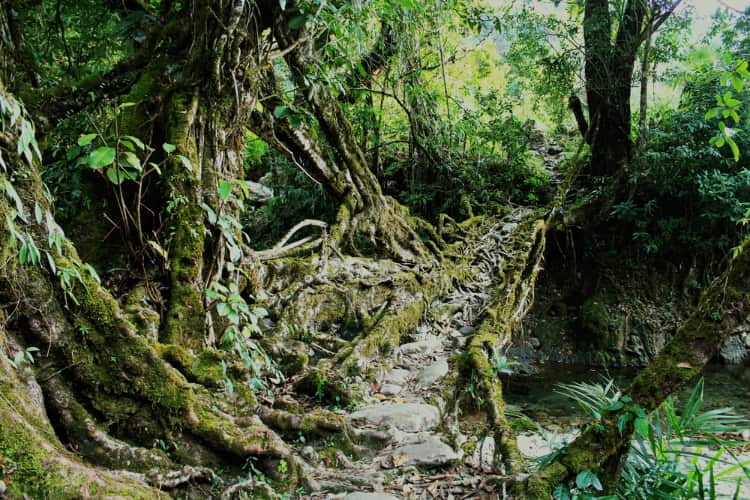
Some of the earliest accounts of living root bridges date back to the 19th century, but currently, a few of the most popular bridges are in Nongriat, Cherrapunji, Nongbareh and other nearby locations. Their continued growth and use across more than 75 villages is a testimony to their practicality. Overflowing rivers, extreme rainfall, and disaster are some of nature’s furies they endure.
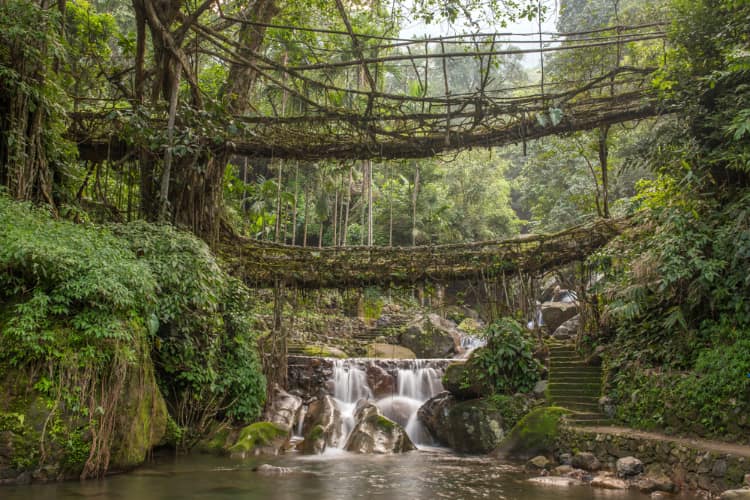
Umshiang Double-Decker Root Bridge is one of the most notable living root bridges in Meghalaya. Located in the vicinity of the Nongriat Village near Cherrapunji, it can also be reached by trekking from Cherrapunji. Umshiang Root Bridge has also made it to National Geographic‘s “Best of the World” list. How much weight a bridge can sustain depends on the maturity of its roots, but many tour guides and travel bloggers agree that an average bridge can take the weight of 30 to 40 people at a time.
How popular are the living bridges of India?
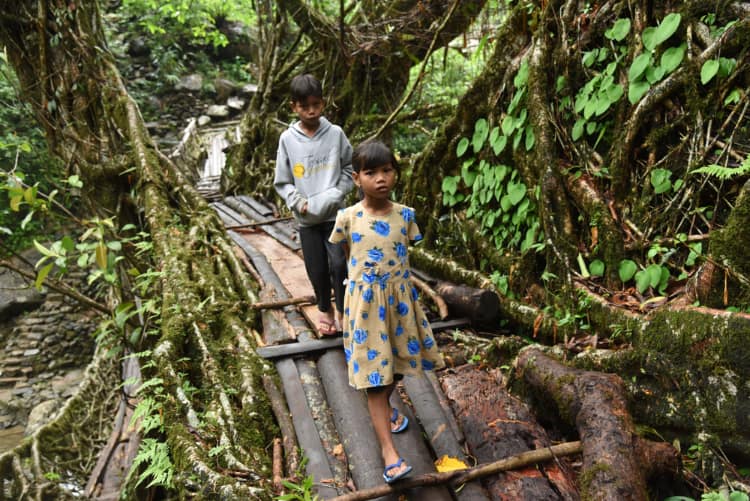
Written about and reported in several publications, blogs, and documentaries, these bridges are spectacularly unique. In 2022, they were included in the tentative list of the UNESCO World Heritage Sites. Highlighting the sociocultural and socio-botanical links, these bridges are maintained by the villagers, especially Khasi and Jaintia tribal communities. The UNESCO website defines these structures in terms of the tribe behind them.
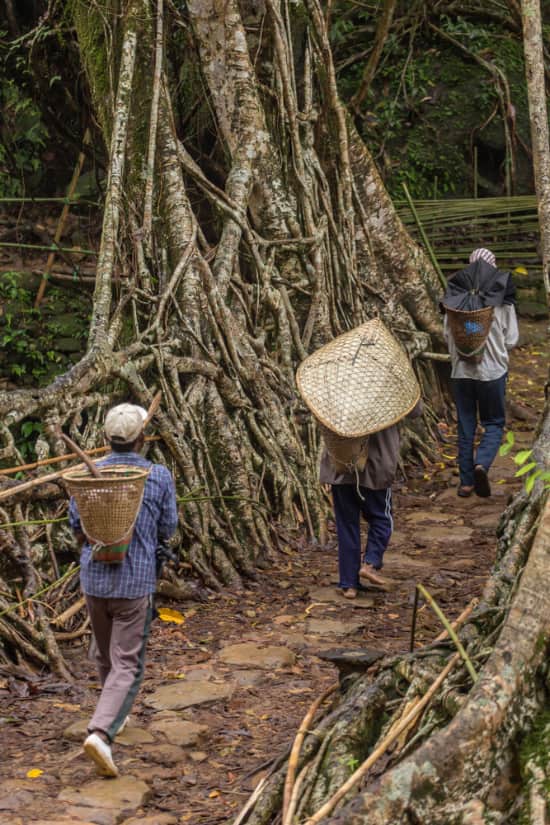
Grown by Khasi tribal communities, the bridges are an ecosystem in themselves and have withstood the test of extreme climatic conditions for centuries. They are a testimony to how harmony between humans and nature can be infinitely beneficial. The Khasi tribe, an indigenous ethnic group of people, are credited with the living root bridges of India. Known for their self-sufficiency, the tribe is also famous for their ability to nurture ecosystems. Living root bridges are one of the most iconic legacies of this tribe.














